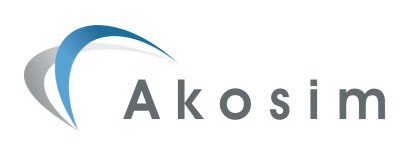GSM
FUN has been designed as a comprehensive planning tool to satisfy operator requirements for network planning and optimisation. Its newly designed user interface is intuitive and provides easy access to a rich feature-set of planning functionality. FUN is being used to support large operator networks for a multitude of wireless technologies and is supporting both large regional office deployments and small work-group configurations.
Principle Features include:
Intuitive User Interface
The well-designed and intuitive graphical user interface (GUI) enables quick and easy access to features. Central to the GUI is a comprehensive network tree enabling users to quickly navigate through FUN.
Data Model
FUN provides a comprehensive data model covering all network elements including location, cells, and equipment devices. It provides full network element configuration flexibility and enables users to model distributed antennas, power splitters, repeaters etc.
The model is hierarchically structured and inclusive of all FUN GSM / UMTS / Microwave network elements and enables the associated attributes to be both extended and queried.
FUN’s powerful modelling capabilities enable users to model complex networks including dual band systems, multi-technology sites
such as GSM, UTMS, microwave, co-located sites (with other operators or services), repeaters, and shared sites.
Report Generator
A flexible report generator is part of the FUN package. Both data and graphical results can be easily displayed, printed and integrated in to standard reports. As an option a graphical layout editor is available for professional layout and design work allowing for further customisation and creation of reports.
Geographic Information System (GIS)
FUN GSM includes a sophisticated GIS as described in the System Overview brochure. It supports multi-resolution vector and raster data and multiple data formats.
Propagation Models
FUN provides a wide choice of prediction algorithms:
Macrocell models
• Free space
• Okumura-Hata model
• Lee model
• Configurable knife edge diffraction model (similar to the standard model of PlaNet®)
• Propagation by diffraction ITU-RP 526
• Parabolic equation model
Microcell models
• COST-231(Walfisch-Ikegami)
• Extended knife edge model
• ‘Micro Champ’ ray launching prediction model developed by Swisscom.
• Ray tracing & ray launching models
Picocell models
• COST-231 (Multi wall model)
• Motley-Keenan
• Dominant paths model
• Ray tracing & launching models
Alternatively, customers can provide their own predication algorithms to be integrated using the FUN C/C++ API.
Parameter Planning
FUN’s well-designed work-flow enables users to promptly move through the various parameter planning stages. FUN supports complex analysis from Cell Assignment Probability (CAP) through to Automatic Frequency Planning (AFP) and BCC planning.
Automatic neighbour cell planning and hand-over design are optional features. Enhanced results are achieved using the cell assignment probabilities, with tried and tested workflow processes based on customer feedback.
Interference calculation
FUN can provide runtime interference calculations on-the-fly specifically for the area and resolution displayed in the geographic window. This fast approach enables users to quickly evaluate numerous different scenarios before making a selection. Alternatively, complete calculations can be performed and stored at fixed resolution for arbitrary areas. Interferences can be calculated against one cell, a group of cells, or between groups.
Cell assignment probabilities
Whereas most cell size calculation algorithms are based only on a best-server field strength comparison, FUN also incorporates handover parameters as well as probability based assignment calculations. This feature enables the automatic generation of neighbour cell lists that are consistently more accurate than manually optimised lists.
FUN also provides the ability to optimise the network load distribution. This feature reduces the number of individual process steps that are needed to be taken by the user, and results in faster and more accurate network design.
This functionality also supports the design of home zone tariffs. Such tariffs require precise knowledge of cell borders, and FUN’s powerful analysis capabilities better support the user in determining border cell probabilities.
Automated Frequency Planning
FUN offers a sophisticated Automatic Frequency Planning (AFP) algorithm developed to accommodate even the most complex networks. The algorithm supports:
• Automatic border coordination
• Channel restrictions due to equipment limitation
• Channel grouping
• Multi-band networks
• BSIC planning with more than one NCC
Both manual and automatic optimisation is supported. The frequency algorithm has been developed for fast, easy, and efficient handling without compromising efficient spectrum use and interference level. Highly automated functions for Border Coordination are available. Full integration of third party modules or customer specific algorithms is also supported.
Color Code Plannig
FUN GSM provides fully automatic color code planning, taking into account existing neighbour lists and used frequencies.
Emergency Area Calculations
FUN supports emergency coverage area analysis for customers requiring to provide this information to government organizations, or consider it essential to incorporate in their network planning. FUN enables users to define emergency areas and based on entered parameters determine coverage.
Traffic Calculations
The cell traffic can be calculated in both ways:
• Import cell traffic from real network and calculate distributed traffic maps based on clutter weights and cell areas.
• Use geographic traffic maps to calculate cell traffic forecast and channel demands per cell.
Cell Area Vectorisation
Best server cell areas can be vectorised. These vector maps can be used in external tools after export into common formats. Within the tool these maps are used for:
1) Display of neighbours. By selecting one cell area with mouse, the neighbours are displayed in different colours
2) Display of channel reuse. By selecting one cell by mouse, all cells with co- or adjacent channels are displayed in different colours
3) As an overlay layer to field strength or interference display.
LAC / RAC Planning
Planning of location areas in GSM networks and routing areas in a GPRS networks require a trade-off between paging traffic on the one hand and area update traffic on the other. Both types of traffic consume scarce radio resources, and minimizing the one is typically at the expense of increasing the other.
With the Location Area and Routing Area Planning modules of FUN it is possible to minimize the area update traffic while keeping the paging traffic at an acceptable level.
